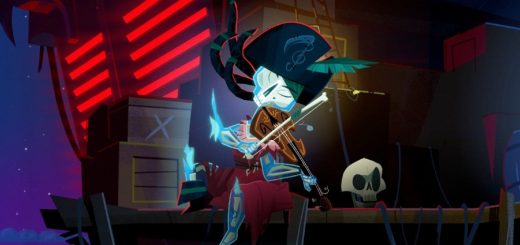Blizzard on Diablo 4's Rogue and how PvP works within the open world
Ahead of BlizzCon 2021, we had the chance to sit down with Diablo 4 game director Luis Barriga, and Diablo 4 art director John Mueller to talk about the just-announced Rogue character class, how PvP works in the new open world, and the darker, grittier look of the game compared to its divisive predecessor.
Diablo IV – Rogue Announce Trailer Watch on YouTube
Why did you bring back the Rogue for Diablo 4?
Luis Barriga: We felt like with the lineup that we were slowly building up, with the Barbarian, the Sorcerer and the Druid, the Rogue gives us this awesome two-in-one capability of representing that finesse dexterity class, both on the melee side and on the ranged side. Of course, on the ranged side, that’s the archetypical Diablo 1 rogue. And then on the melee side, fans of pen and paper RPGs, that’s like the Rogue’s bread and butter. So we felt that was the perfect opportunity to speak to all the players that love that finesse type gameplay, fast-paced combat, very different from the Barbarian as an example, that whether they want melee, whether they want ranged, or whether they want a hybrid approach, the Rogue gave us that canvas to paint on it. We also love the legacy the Rogue has in the franchise, where it was a playable class in the first game. It was a great mercenary addition in the second game. And they have some ties into the lore. Of course, we’ve expanded it. You don’t have to play a Rogue that looks like they’re part of The Sisterhood of the Sightless Eye. You can play an outlaw from the streets of Caldeum, or a smuggler from the swamps of Hawezar. Whatever the Rogue character that’s in your head, you have a lot of customisation options there.
John Mueller: We basically started with the little pixels of Diablo 1 as a jumping-off point of interpreting this into a modern game engine. So we’ve really had a tonne of fun with it. People know what to expect with the class, but we get to interpret that into more of like the bandit, the outlaw, the brigand, the cutthroat in this Diablo 4 lens that we’ve put on everything, which is this return to darkness and a grittier, realistic take on things, which has been a lot of fun.
You’ve definitely gone for a darker approach in terms of the look, feel and tone for the game. What motivated that decision?
John Mueller: Diablo 3 had this beautifully hand painted, handcrafted, look about it. But Diablo 2 had this very gritty, realistic take on things. The opportunity with this game was to find the sweet spot between the two. We’re not trying to make things look like photographs. We’re trying to make things look painterly. One of the things we talk about, we call it the old masters pillar – the goal is to make it feel like a mediaeval masterpiece. If you think of mediaeval artists, Renaissance paintings, like dark paintings from mediaeval times, there’s angels and demons and mankind caught in the middle. It’s very much rooted in our own history. That was where we started with it and we’re really happy with where we’ve landed now. People have given us some good feedback about the look of the game, and so that just encourages us even more.
Luis Barriga: When Diablo came out, there were many high fantasy RPGs. Diablo stood out because it was darker, grittier, it had angels and demons instead of high fantasy themes. We wanted to make sure there was absolutely no confusion that when you fire up Diablo 4, it was a return to those darker roots.

